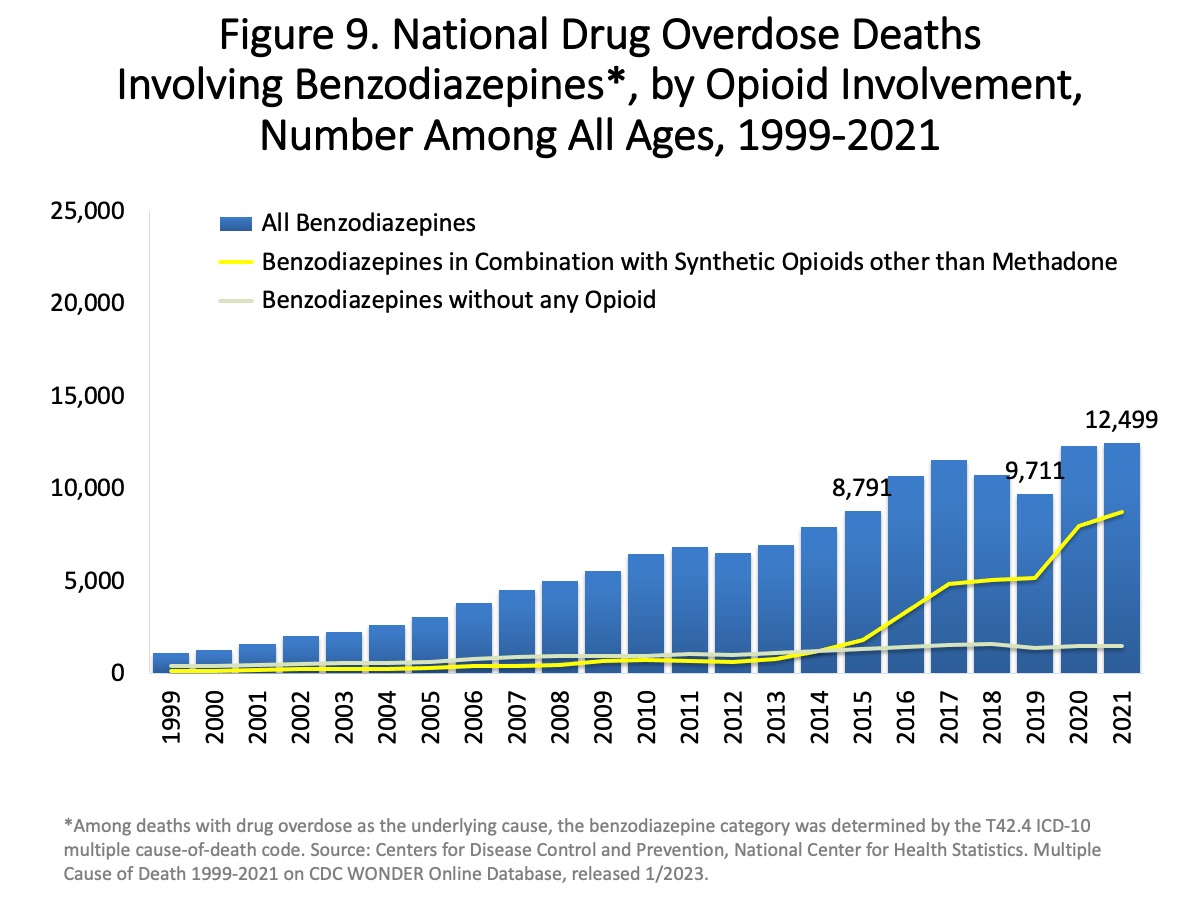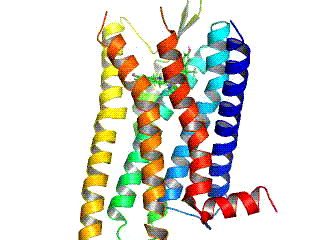|
Levomethorphan
Levomethorphan (LVM) (INN, BAN) is an opioid analgesic of the morphinan family that has never been marketed. It is the L-stereoisomer of racemethorphan (methorphan). The effects of the two isomers of the racemethorphan are quite different, with dextromethorphan (DXM) being an antitussive at low doses and a dissociative hallucinogen at much higher doses. Levomethorphan is about five times stronger than morphine. Levomethorphan is a prodrug to levorphanol, analogously to DXM acting as a prodrug to dextrorphan or codeine behaving as a prodrug to morphine. As such, levomethorphan has similar effects to levorphanol but is less potent as it must be demethylated to the active form by liver enzymes before being able to produce its effects. As a prodrug of levorphanol, levomethorphan functions as a potent agonist of all three of the opioid receptors, μ, κ (κ1 and κ3 but notably not κ2), and δ, as an NMDA receptor antagonist, and as a serotonin-norepinephrine reuptake inhibitor ... [...More Info...] [...Related Items...] OR: [Wikipedia] [Google] [Baidu] |
Opioid
Opioids are substances that act on opioid receptors to produce morphine-like effects. Medically they are primarily used for pain relief, including anesthesia. Other medical uses include suppression of diarrhea, replacement therapy for opioid use disorder, reversing opioid overdose, and suppressing cough. Extremely potent opioids such as carfentanil are approved only for veterinary use. Opioids are also frequently used non-medically for their euphoric effects or to prevent withdrawal. Opioids can cause death and have been used for executions in the United States. Side effects of opioids may include itchiness, sedation, nausea, respiratory depression, constipation, and euphoria. Long-term use can cause tolerance, meaning that increased doses are required to achieve the same effect, and physical dependence, meaning that abruptly discontinuing the drug leads to unpleasant withdrawal symptoms. The euphoria attracts recreational use, and frequent, escalating recreational ... [...More Info...] [...Related Items...] OR: [Wikipedia] [Google] [Baidu] |
Racemethorphan
Methorphan comes in two isomeric forms, each with differing pharmacology and effects: * Dextromethorphan - An over-the-counter cough suppressant, as well as dissociative hallucinogen. * Levomethorphan - A potent opioid analgesic that was never clinically developed; a prodrug of the powerful opioid agonist analgesic levorphanol (Levo-Dromoran). Racemethorphan refers to the racemic mixture of both of these stereoisomers. It is listed under the Single Convention on Narcotic Drugs 1961 and is therefore listed in the United States as a Controlled Substance, specifically as a Narcotic in Schedule II with an ACSCN of 9732 and an annual aggregate manufacturing quota of 3 grams in 2014. The salts in use are the hydrobromide (free base conversion ratio 0.770) and the tartrate (0.644) See also * Morphinan Morphinan is the prototype chemical structure of a large chemical class of psychoactive drugs, consisting of opiate analgesics, cough suppressants, and dissociative ha ... [...More Info...] [...Related Items...] OR: [Wikipedia] [Google] [Baidu] |
Cyclorphan
Cyclorphan is an opioid analgesic of the morphinan family that was never marketed. It acts as a μ-opioid receptor (MOR) weak partial agonist or antagonist, κ-opioid receptor (KOR) full agonist, and, to a much lesser extent, δ-opioid receptor (DOR) agonist (75-fold lower affinity relative to the KOR). The drug was first synthesized in 1964 by scientists at Research Corporation.Varghese V & Hudlicky T. A Short History of the Discovery and Development of Naltrexone and Other Morphine Derivatives. Chapter 6 in Natural Products in Medicinal Chemistry, Volume 60 of Methods and Principles in Medicinal Chemistry. Ed. Stephen Hanessian. John Wiley & Sons, 2013. In clinical trials, it had relatively long duration, good absorption, and provided strong pain relief but produced psychotomimetic effects via KOR activation, so its development was not continued. See also * Butorphanol * Levomethorphan * Levorphanol * Nalbuphine * Oxilorphan * Proxorphan * Xorphanol Xorphanol ( ... [...More Info...] [...Related Items...] OR: [Wikipedia] [Google] [Baidu] |
Morphinan
Morphinan is the prototype chemical structure of a large chemical class of psychoactive drugs, consisting of opiate analgesics, cough suppressants, and dissociative hallucinogens, among others. Structure Morphinan has a phenanthrene core structure with the ''A'' ring remaining aromatic and the ''B'' and ''C'' rings being saturated, and an additional nitrogen-containing, six-membered, saturated ring, the ''D'' ring, being attached to carbons 9 and 13 of the core, and with the nitrogen being at position 17 of the composite. Of the major naturally occurring opiates of the morphinan type—morphine, codeine and thebaine—thebaine has no therapeutic properties (it causes seizures in mammals), but it provides a low-cost feedstock for the industrial production of at least four semi-synthetic opiate agonists, including hydrocodone, hydromorphone, oxycodone and oxymorphone, and the opioid antagonist naloxone. Structure-activity relationship The physiological behavior of ... [...More Info...] [...Related Items...] OR: [Wikipedia] [Google] [Baidu] |
κ-opioid Receptor
The κ-opioid receptor or kappa opioid receptor, abbreviated KOR or KOP, is a G protein-coupled receptor that in humans is encoded by the ''OPRK1'' gene. The KOR is coupled to the G protein Gi/G0 and is one of four related receptors that bind opioid-like compounds in the brain and are responsible for mediating the effects of these compounds. These effects include altering nociception, consciousness, motor control, and mood. Dysregulation of this receptor system has been implicated in alcohol and drug addiction. The KOR is a type of opioid receptor that binds the opioid peptide dynorphin as the primary endogenous ligand (substrate naturally occurring in the body). In addition to dynorphin, a variety of natural alkaloids, terpenes and synthetic ligands bind to the receptor. The KOR may provide a natural addiction control mechanism, and therefore, drugs that target this receptor may have therapeutic potential in the treatment of addiction. There is evidence that distribution ... [...More Info...] [...Related Items...] OR: [Wikipedia] [Google] [Baidu] |
NMDA Receptor Antagonist
NMDA receptor antagonists are a class of drugs that work to antagonize, or inhibit the action of, the ''N''-Methyl-D-aspartate receptor ( NMDAR). They are commonly used as anesthetics for animals and humans; the state of anesthesia they induce is referred to as dissociative anesthesia. Several synthetic opioids function additionally as NMDAR-antagonists, such as pethidine, levorphanol, methadone, dextropropoxyphene, tramadol and ketobemidone. Some NMDA receptor antagonists, such as ketamine, dextromethorphan (DXM), phencyclidine (PCP), methoxetamine (MXE), and nitrous oxide (N2O), are sometimes used as recreational drugs, for their dissociative, hallucinogenic, and euphoriant properties. When used recreationally, they are classified as dissociative drugs. Uses and effects NMDA receptor antagonists induce a state called dissociative anesthesia, marked by catalepsy, amnesia, and analgesia. Ketamine is a favored anesthetic for emergency patients with unknown medical his ... [...More Info...] [...Related Items...] OR: [Wikipedia] [Google] [Baidu] |
Opioid Receptor
Opioid receptors are a group of inhibitory G protein-coupled receptors with opioids as ligands. The endogenous opioids are dynorphins, enkephalins, endorphins, endomorphins and nociceptin. The opioid receptors are ~40% identical to somatostatin receptors (SSTRs). Opioid receptors are distributed widely in the brain, in the spinal cord, on peripheral neurons, and digestive tract. Discovery By the mid-1960s, it had become apparent from pharmacologic studies that opiate drugs were likely to exert their actions at specific receptor sites, and that there were likely to be multiple such sites. Early studies had indicated that opiates appeared to accumulate in the brain. The receptors were first identified as specific molecules through the use of binding studies, in which opiates that had been labeled with radioisotopes were found to bind to brain membrane homogenates. The first such study was published in 1971, using 3H- levorphanol. In 1973, Candace Pert and Solomon H. Snyd ... [...More Info...] [...Related Items...] OR: [Wikipedia] [Google] [Baidu] |
μ-opioid Receptor
The μ-opioid receptors (MOR) are a class of opioid receptors with a high affinity for enkephalins and beta-endorphin, but a low affinity for dynorphins. They are also referred to as μ(''mu'')-opioid peptide (MOP) receptors. The prototypical μ-opioid receptor agonist is morphine, the primary psychoactive alkaloid in opium. It is an inhibitory G-protein coupled receptor that activates the Gi alpha subunit, inhibiting adenylate cyclase activity, lowering cAMP levels. Structure The structure of the μ-opioid receptor has been determined with the antagonist β-FNA, the agonist BU72, and in a complex with DAMGO and Gi protein. Splice variants Three variants of the μ-opioid receptor are well characterized, though RT-PCR has identified up to 10 total splice variants in humans. Location They can exist either presynaptically or postsynaptically depending upon cell types. The μ-opioid receptors exist mostly presynaptically in the periaqueductal gray region, and in the ... [...More Info...] [...Related Items...] OR: [Wikipedia] [Google] [Baidu] |
δ-opioid Receptor
The δ-opioid receptor, also known as delta opioid receptor or simply delta receptor, abbreviated DOR or DOP, is an inhibitory 7-transmembrane G-protein coupled receptor coupled to the G protein Gi/G0 and has enkephalins as its endogenous ligands. The regions of the brain where the δ-opioid receptor is largely expressed vary from species model to species model. In humans, the δ-opioid receptor is most heavily expressed in the basal ganglia and neocortical regions of the brain. Function The endogenous system of opioid receptors is well known for its analgesic potential; however, the exact role of δ-opioid receptor activation in pain modulation is largely up for debate. This also depends on the model at hand since receptor activity is known to change from species to species. Activation of delta receptors produces analgesia, perhaps as significant potentiators of μ-opioid receptor agonists. However, it seems like delta agonism provides heavy potentiation to any mu agonism. ... [...More Info...] [...Related Items...] OR: [Wikipedia] [Google] [Baidu] |
Psychotomimetic
A drug with psychotomimetic (also known as psychotogenic) actions mimics the symptoms of psychosis, including delusions and/or delirium, as opposed to only hallucinations. Psychotomimesis is the onset of psychotic symptoms following the administration of such a drug. Some rarely used drugs of the opioid class have psychotomimetic effects. Particularly, mixed kappa receptor agonist mu receptor antagonist opioid analgesics can cause dose-related psychotomimesis. This adverse effect, incidence 1–2%, limits their use. Pentazocine and butorphanol fall under this opioid class. There is evidence that cannabinoids are psychotomimetic, especially delta-9-tetrahydrocannabinol (Δ9-THC). D'Souza et al. (2004) found that intravenous THC produced effects that resemble schizophrenia in both the positive symptoms (hallucinations, delusions, paranoia, and disorganized thinking) and negative symptoms ( avolition, asociality, apathy, alogia, and anhedonia). Certain strains of cannabis may be ... [...More Info...] [...Related Items...] OR: [Wikipedia] [Google] [Baidu] |
Dysphoria
Dysphoria (; ) is a profound state of unease or dissatisfaction. It is the semantic opposite of euphoria. In a psychiatric context, dysphoria may accompany depression, anxiety, or agitation. In psychiatry Intense states of distress and unease increase the risk of suicide, as well as being unpleasant in themselves. Relieving dysphoria is therefore a priority of psychiatric treatment. One may treat underlying causes such as depression or bipolar disorder as well as the dysphoric symptoms themselves. The '' Diagnostic and Statistical Manual of Mental Disorders'' (DSM-5) categorizes specific dysphoria in the obsessive–compulsive spectrum. Dissatisfaction with being able-bodied can be diagnosed as body integrity dysphoria in the ICD-11. Gender dysphoria Gender dysphoria is discomfort, unhappiness or distress due to one's assigned sex. The current edition (DSM-5) of the '' Diagnostic and Statistical Manual of Mental Disorders'' uses the term "gender dysphoria" where it pr ... [...More Info...] [...Related Items...] OR: [Wikipedia] [Google] [Baidu] |




